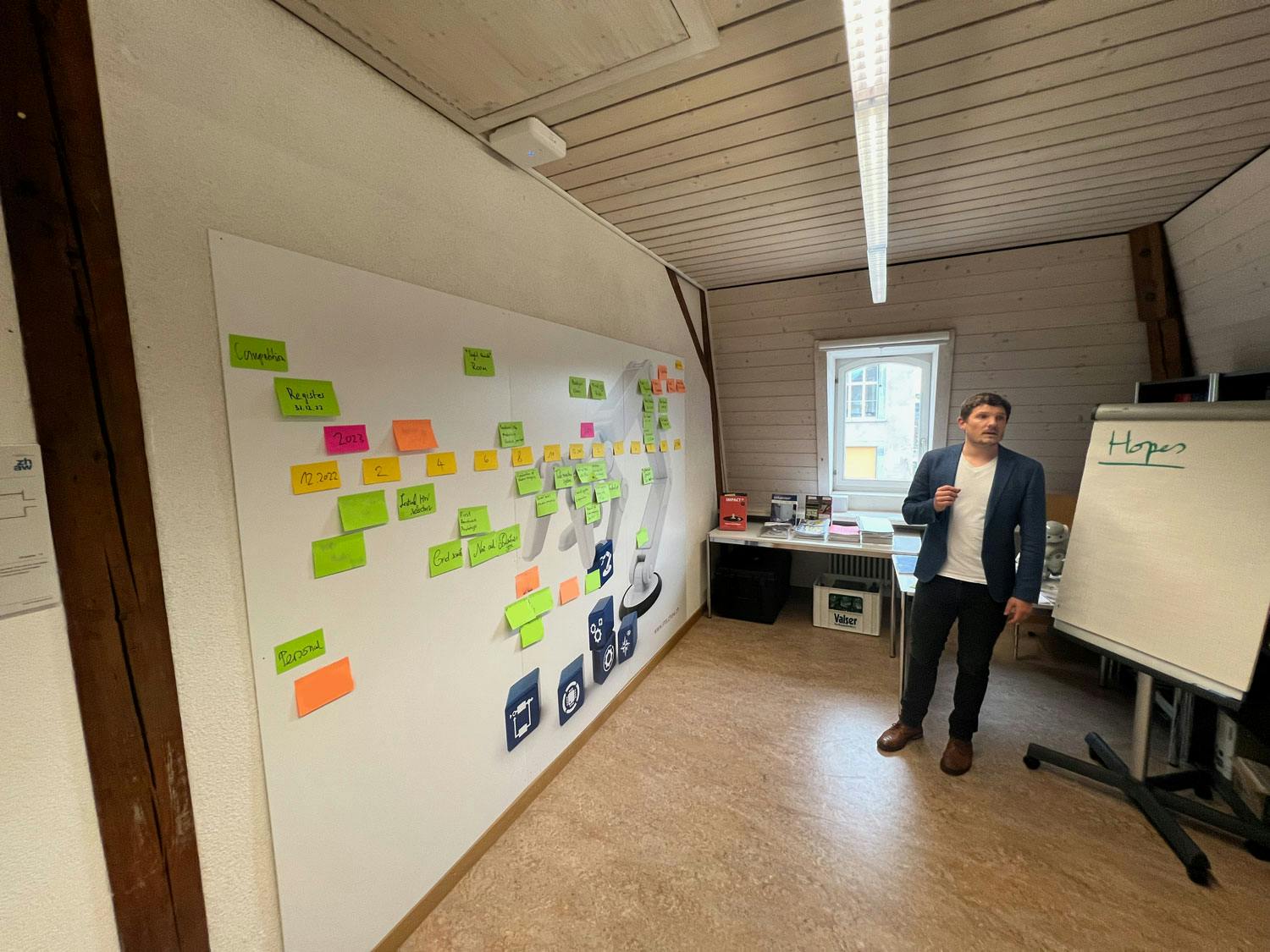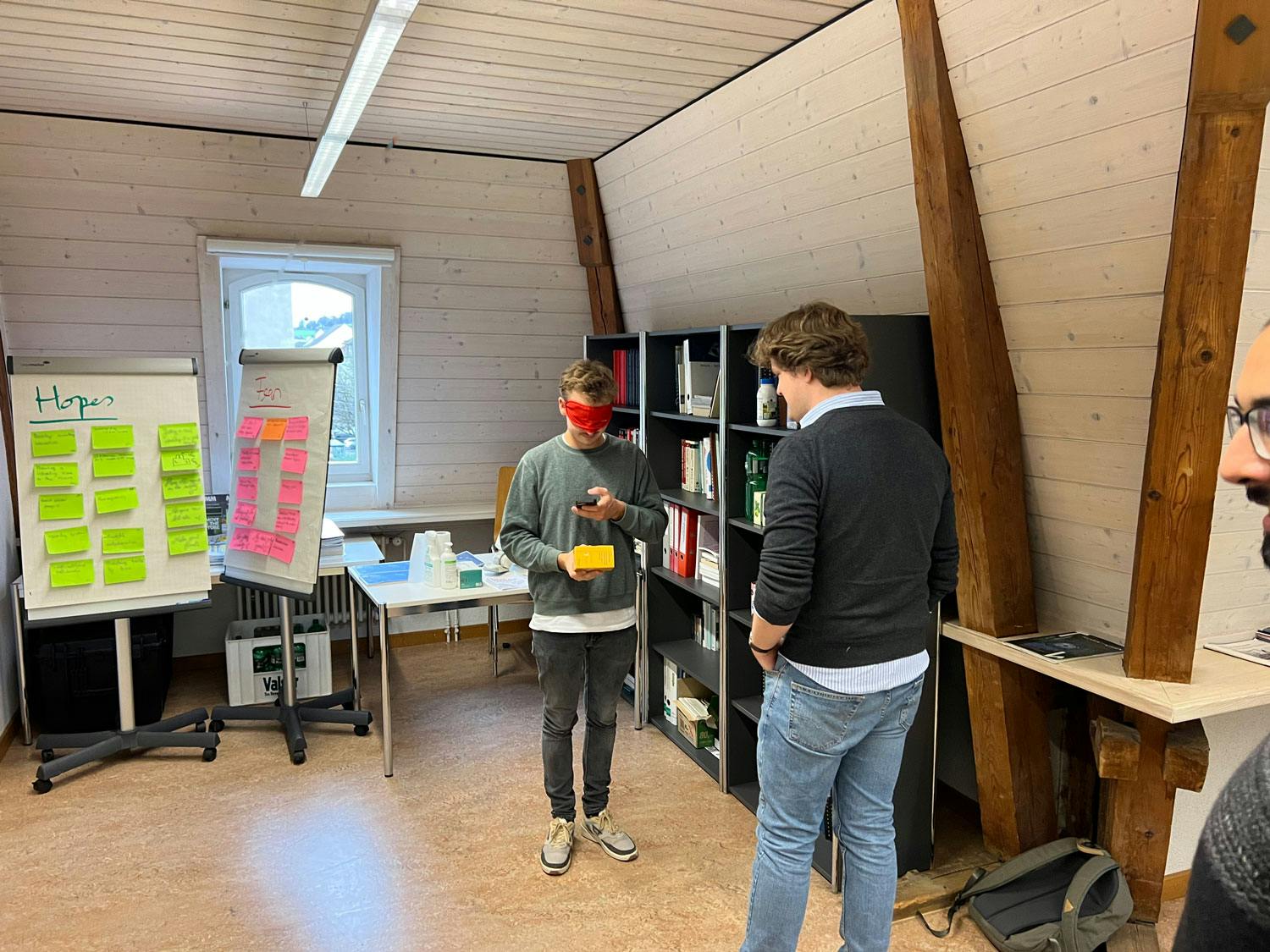Workshop Introduction
The Sight Guide Team recently participated in a design thinking workshop under the leadership of Prof Alexander Schmid , a professor at the Bern University of Applied Sciences (BFH) in the Institute for Digital Technology Management . This workshop's primary goal was to gain a deeper understanding of the Cybathlon tasks and cultivate a successful working relationship within the team.
Design Thinking Fundamentals
Design thinking is a human-centered, problem-solving approach that emphasizes empathy, experimentation, and iteration. It encourages individuals and teams to fully understand the users needs and perspectives before diving into potential solutions. The process typically involves five stages: empathize, define, ideate, prototype, and test. By following these stages, design thinking allows for the generation of innovative and user-centric solutions that address complex problems, such as the ones faced by visually impaired individuals. By incorporating design thinking into the Sight Guide Team's workshop, the team was better equipped to identify the core challenges, brainstorm creative solutions, and develop a more profound understanding of the Cybathlon tasks and their real-world implications.
Getting Acquainted
In the first step of the workshop, individual team members presented their expectations and the know-how they bring to the table. This exercise allowed everyone to become better acquainted and understand each member's strengths and weaknesses, fostering a stronger and more cohesive team dynamic.
Timeline Planning
Next, Prof Schmid guided us in creating a comprehensive timeline that included all crucial dates for the next two years. We incorporated Cybathlon-related events as well as personal dates, ensuring that the team remains informed about each member's availability. The following photo showcases the Post-Its we used for this timeline.

Prof Alexander Schmid stands in front of a wall covered with colorful Post-It notes, each representing a crucial date or event in the Sight Guide Team's timeline. He is passionately explaining the significance of the timeline to the team members, who are attentively listening and actively engaged in the discussion.
Hands-on Experience
Before diving into potential solutions, we took a hands-on approach to better understand the challenges we aim to address. We set up three Cybathlon tasks (Front Door, Grocery, and Serving Food) and attempted to complete them while blindfolded. This exercise sensitized us to the difficulties faced by visually impaired individuals and helped us appreciate the challenges at hand.

Patrick, a team member, is attempting to complete the Grocery challenge while blindfolded. He is using an app on his smartphone that reads aloud the text on a tea package. The image captures the moment of concentration on his face as he tries to understand the information provided by the app, showcasing the challenge faced by visually impaired individuals in everyday tasks.
Conclusion and Appreciation
The design thinking workshop facilitated by Prof Alexander Schmid proved invaluable in fostering a deeper understanding of the Cybathlon tasks and strengthening our team's bond. We would like to express our heartfelt thanks to Prof Schmid for his exceptional guidance and to the Bern University of Applied Sciences for their generous support of our project.